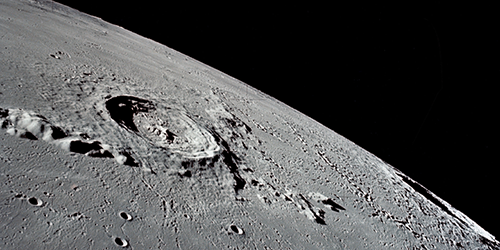“Spin” Leaves Its Mark on Some Meteorite Craters
Early in the 20th century, businessman Daniel Barringer lost a fortune searching for an iron meteorite that he thought lay beneath the floor of Meteor Crater in Arizona. Despite, thankfully, having few opportunities to study large meteorite impacts, physicists now know that Barringer’s efforts were futile: the projectile that formed Meteor Crater largely vaporized on impact. Yet the details that determine how a meteorite’s remains are distributed—and how the crater is shaped by its impact—remain poorly understood. Now Erick Franklin at the State University of Campinas, Brazil, and colleagues have modeled impacts involving objects formed from a material aggregate, finding that the dynamics depend on a given aggregate’s strength and spin [1]. Their results could help explain the diverse morphology of craters seen on our Solar System’s planets and moons.
Franklin and colleagues simulated spherical, grapefruit-sized projectiles, each one comprising nearly two thousand millimeter-sized spheres. In every simulation, one of these aggregate projectiles struck a loose granular surface head-on while spinning around an axis perpendicular to that surface. The researchers varied the projectiles’ impact speeds, their rates of rotation, and the strength of the bonds between their component spheres.
For a projectile that shatters on impact, the simulations show that, on average, fragments of a high-angular-momentum projectile spread more widely than those of a slow-spinning one but penetrate the impacted surface less deeply. Meanwhile, the shape of the crater depends partly on the bond strength (loosely bound aggregates excavate wide, shallow craters) and partly on spin speed (fast-spinning, loosely bound aggregates excavate the widest craters). In low-bond-strength cases, some fragments of the impactor remain above the surface, forming peaks in the crater’s rims. Such knowledge could aid in identifying the origin of material found in craters and perhaps in avoiding future prospectors suffering the disappointment Barringer did a century ago.
–Marric Stephens
Marric Stephens is a Corresponding Editor for Physics Magazine based in Bristol, UK.
References
- D. D. Carvalho et al., “Impact craters formed by spinning granular projectiles,” Phys. Rev. E 108, 054904 (2023).




